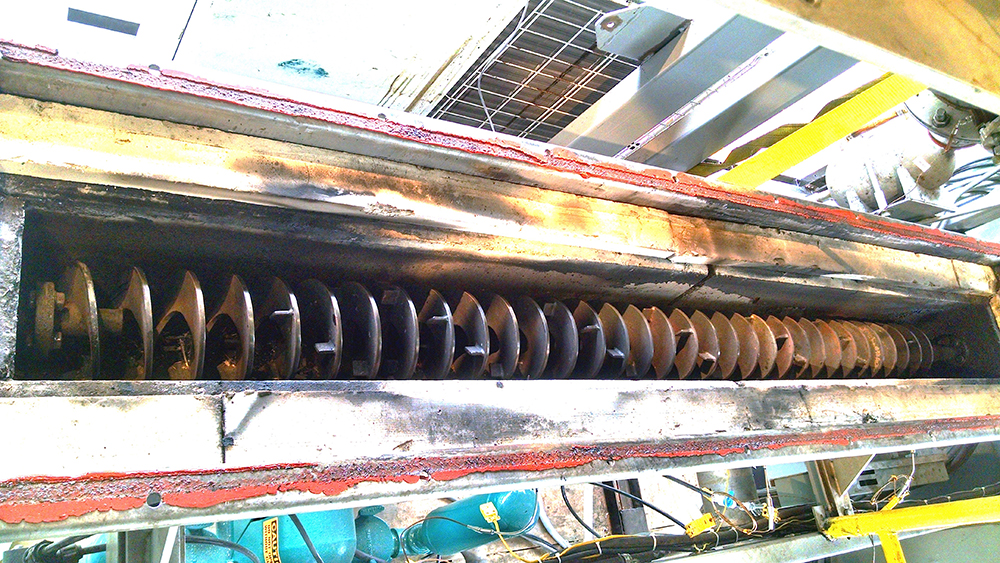Charles Chamberlin, David Carter, and Arne Jacobson recently authored an article on measuring residence time distributions of wood chips in a screw conveyor reactor. A screw conveyor or auger makes use of a rotating helical blade inside of a tube or trough to move wood chips, sawdust, flour, or other granular materials through a reactor — such as a dryer, heater, cooler, gasifier, or torrefier. How much change in the materials takes place in such reactors depends on the average residence time and how variable that residence time is.
This paper compares three alternative methods for measuring the residence time distribution of wood chips in a screw conveyor reactor using experimental results from a pilot scale torrefier:
- addition of material to an empty reactor (step-up),
- halting addition of material to a reactor under steady flow, (step-down), and
- addition of a pulse of labelled material (i.e., a tracer) to a reactor under steady flow.
We found that all three methods yield residence time distributions that are approximately symmetrical and bell-shaped, but the distribution estimated from the pulse input of tracer exhibited a long trailing tail that was not detectable in either the step-up or step-down results. Second, we demonstrated that a normal probability plot provided a useful way to display and analyze the distributions obtained in the tracer experiments. Finally, we observed that all three methods yielded mean residence times that consistently differed from the nominal values, with the step-up method averaging 8% shorter, the pulse addition of tracer averaging 7% longer, and the step-down averaging 60% longer.
The article appeared in the August 2018 issue of Fuel Processing Technology and is available to download here in pdf.














